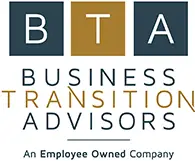Every ESOP plan is carefully designed to fit specific needs and is not a one-size-fits-all approach. The process varies in complexity depending upon the unique circumstances of the company, the owner, and the goals to be achieved. We insist on installing a succession plan that will work over the long term while maximizing benefits to all concerned.
Investigative Phase
The purpose of this phase is to determine if an ESOP will work for the owners and the company. Our general process is as follows, although we customize phases as circumstances require:
Complimentary “ESOPs 101”
This one-on-one educational webinar examines how ESOPs work as a very tax advantaged exit strategy for business owners. Overview of potential advantages to the selling shareholder, the sponsoring company and the employees, including immediate liquidity (whole or part), no third party interests, significant corporate tax deductions and capital gains tax deferrals. We will also discuss corporate governance, structuring alternatives, financing and tax planning related to ESOPs.
Data gathering & Complimentary Review
BTA will offer a complimentary review of the Company provided data to determine if an ESOP is worthy of further investigation based on identified goals and objectives. To begin the first phase of the process, we initially request the following information:
- BTA provided “Fact Finder” completed by the company.
- 3 years of financials (balance sheets and income statements).
- Year to date balance sheet and income statement.
- Trailing twelve-month income statement.
- 5 years of financial projections.
Preliminary Valuation/Preliminary Analysis
In most cases our clients have little or no knowledge of ESOPs or ESOP issues, nor do they understand the role that an ESOP might play in business or management succession planning. The first step is to provide general background knowledge to our clients about ESOPs, how they compare to other possible succession strategies, how they work and what are the likely benefits. This normally includes preliminary valuation work to determine a “range of value” so that an owner can come up to speed and make a basic decision as to if an ESOP is viable and likely appropriate in their circumstance. The preliminary analysis is an inexpensive way for a client to learn if an ESOP deserves further consideration. The Preliminary Analysis normally focuses on the following:
- An estimate of the likely value of the company.
- A “work up” to look at the basic cash flow available to be used in an ESOP.
- The ability of the company to sustain. additional debt to buy stock from owners
- The likely tax savings that can be created by using an ESOP.
- An evaluation of the Owners and companies goals to see if they can be achieved.
This “30,000-foot view” is intended to give clients enough information to make an informed decision at a reasonable cost. If the company and the selling shareholders find the ESOP benefits attractive, then the next step is an extensive Feasibility Study to take into account all the important factors to be considered in implementing an ESOP.
Feasibility Study
This is a rigorous analysis of the issues surrounding and relating to the overall plan. The study includes:
- Looking at the current and future cash flows to determine what reasonable and sustainable level of debt the company can afford.
- What the future operational needs of the company are, including growth plans, capital expenditures, working capital and other commitments.
- The ability and desirability of outside financing, including term debt, LOC, etc.
- Establishing future operational needs of the company such as: growth plans, capital expenditures, working capital and other commitments.
- Focus on the valuation issues to insure a maximum value for the owners.
- Costs to install and operate the ESOP.
- The impact of corporate tax savings on cash flow and how to maximize the benefits to both the selling shareholder as well as the company.
- Examining the estate and possible implications of the ESOP to the owner, in addition to their personal cash flow after the transaction.
The Feasibility Study will leave the shareholders with as much understanding as possible as far as what can be achieved and what cannot by implementing an ESOP.
Implementation Phase
ESOPs require a number of different disciplines and specialties. BTA uses a proven “team approach,” which includes using all the qualified advisors a client may already have, i.e., a corporate attorney or CPA, while adding all the others that are needed in any given transaction. This may include ERISA counsel, lenders, valuation experts, etc. The team then works to implement the plan and BTA acts as a “quarterback” or overall coordinator to make sure the plan is executed. Our general process is outlined below, although each transaction is unique and customized accordingly.
Plan Design
We are not attorneys and always use outside counsel who will draft the legal agreements. However, we do work with the owner to “coach” him/her on the various possibilities as to what can or can’t be included in the ESOP Plan document. Our focus is not so much on the legal aspects, which is the attorney’s job, but what are the practical implications of designing the plan one way or the other and how it will affect the ongoing operations of the company. While plans can be amended, the process can be expensive and time consuming, and the Department of Labor may not allow some changes after the fact. The ESOP Plan document will likely have to be lived with for many years to come.
Transaction Design
We will assist in designing the transaction to meet the needs of the company and the owner by discussing alternatives in regards to financing, how the plan might be financed and the benefits or burdens of each approach. We will focus on maximizing benefits to the selling owner, while staying within the legal guidelines and making sure the company can afford the plan. This may include using different classes of stock, changing corporate forms or other necessary techniques to achieve the goals of the plan.
Corporate Reorganization
In some cases it is required that the current business form be altered or changed completely to achieve the best tax or other result. This may be as simple as changing corporate form from “S” to “C”, but in other cases it may require a complete corporate reorganization, merger, creation of a holding company, etc.
Valuation
Under the legal requirements surrounding an ESOP, the stock of the selling shareholders cannot be sold for greater than “Fair Market Value”. The Trustee, on behalf of the ESOP Trust, will engage an independent qualified valuator to determine a fair price for the ESOP to pay. BTA will act as the Financial Advisor on behalf of the company to determine the value that is fair to the Selling Shareholders. An arms-length negotiation will take place with the Trustee for the final purchase price and terms.
Financing
ESOP financing is a specialty in and of itself, and requires knowledge and experience to get a good result. Most banks and financial institutions don’t understand ESOPs, but in some cases our clients can get financing on their own. If not, we are prepared to attempt to locate, negotiate and close financing for the transaction. We also look at the global financing issues for the company, including operating lines of credit, equipment financing and bonding considerations to insure adequate operating capital and financing is available after the transaction.
IRC§1042 Design and Execution
We work with the owner to design the transaction to secure the available capital tax deferral according to IRS guidelines on sale of stock regardless of basis. We consider specific needs and goals, educate clients as to their options, analyze their personal cash flow, and look at the available strategies to maximize income while staying within the rules.

Management Incentive Plans
We work with the owners and the key successor managers to insure that an effective management transition plan is in place and that adequate management incentives are included. This may include a direct purchase of some stock by management, deferred compensation plans, stock bonus, or other plans as required.
Repurchase Liability Study & Funding Analysis
We gather the data to analyze the emerging repurchase obligation to estimate and measure the impact on cash flow, look at the various funding options, and compare them. We also educate management on the major options for repurchase of the stock and insure that our plan design takes this into account. We introduce qualified specialists in funding the repurchase liability so that it can be properly funded. Ignoring this important facet of an ESOP can mean personal liability for the ESOP Trustee in the future, and other cash flow problems for the company.
Employee Communications
Communicating the ESOP to the employees is one of the most difficult tasks if the company really wants to obtain employee “buy in.” This includes meetings with senior management to design a customized power point presentation to the employees to explain what the company has done, why it has done it, and how it will impact the company, the employees and the selling owner. We meet with all employees and make a joint presentation, which may include management.
While evaluating and installing an ESOP is complicated and has many moving parts that require experience and specific knowledge to implement, BTA specializes in working side by side with management and the selling owners to design a liquidity and Succession Plan that will achieve as many of their goals as possible and provide the highest net after tax benefits to the company and the selling owners.


